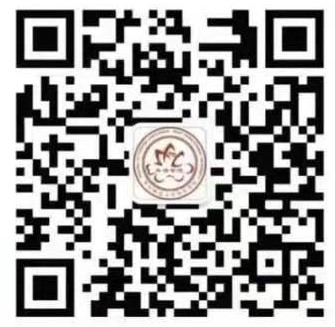Cheng Fangwu Translated The Communist Manifesto Five Times
Cheng Fangwu was an outstanding proletarian revolutionist in China. After the May4th Movement, he engaged in revolutionary activities against imperialism and feudalism with Guo Moruo and played an important role in promoting the New Culture Movement. Cheng Fangwu translated the Communist Manifesto five times, spanning nearly half a century.

In 1929, Cheng Fangwu translated the Communist Manifesto for the first time.
He joined the Communist Party of China (CPC) in Paris in 1928. At that time, Cai Hesen learned that Cheng was knowledgeable and had a good command of five foreign languages, so he wrote to Cheng from Moscow, asking him to translate the Communist Manifesto into Chinese and saying that the Moscow Foreign Languages Press was going to publish it. Several months later, by referring to the English and French version of The Communist Manifesto , Cheng Fangwu finished the translation of the German version which was the most popular of the day. . Then, he asked a German communist to take the translation to Cai Hesen in Moscow. Unfortunately, Cai Hesen was martyred later, and the translation was lost.
In 1938, Cheng finished the second translation of The Communist Manifesto in cooperation with Xu Bing in Yan ’an.
At that time, Xu Bing was the editor of Jiefang Daily, and Cheng was the Principal of Northern Shaanxi Public School. The Publicity Department of the CPC Central Committee asked them to translate the German pamphlet of The Communist Manifesto. Therefore, they divided the book into two parts, with Cheng translating the first half and Xu the second half. Spreading widely, this version was the first Chinese translation of the original German text.

In 1945, Cheng Fangwu translated the Communist Manifesto for the third time.
At that time, Cheng Fangwu returned to Yan ’an from Fuping County, Shanxi-Chahaer-Hebei Border Region, to participate in the 7th National Congress of the CPC. He made a major revision of the translation and gave the finalized version to the Liberation Press. Yet later Kuomintang Army attacked Yan ’an , and the translation had never been found.
In 1952, Cheng Fang-wu translated The Communist Manifesto for the fourth time.
During that period, he was working at Renmin University of China, where he found time to slightly revise the version translated in Yan ’an to commemorate the 105th anniversary of the publication of The Communist Manifesto and the 135th anniversary of the birth of Marx.
In 1975, Cheng Fangwu translated The Communist Manifesto for the fifth time.
In 1974, he wrote to Mao Zedong about the translation of the original works of Marx and Engels. In his letter, he pointed out that there were many mistakes in the existing translations, so he hoped to re-translate the originals. In August, Chairman Mao issued a directive to support his work. During this period, Cheng and his assistants discussed three hours every day, studying the revised draft word for word. After three major revisions, the first draft was finished in September. Later, Cheng also invited many comrades to discuss the draft together, and widely solicited the public’s opinions. After many times of revision, he eventually finalized the translation.
The introduction of The Communist Manifesto into China was like a timely rain upon a dry land. As Cheng Fangwu wrote in the epilogue of the translation of The Communist Manifesto in 1978, “It played a very important role in educating the Chinese before the revolutionary storm. It gave inestimable strength to the masses who were seeking light in the dark.”

成仿吾是我国杰出的无产阶级革命家。“五四”运动后,与郭沫若等人从事反帝反封建的革命文化活动,对推动我国革命的新文化运动起了重要作用。成仿吾曾先后五次对《共产党宣言》进行翻译,时间跨越近半个世纪。
1929年,成仿吾第一次翻译《共产党宣言》。1928年他在巴黎加入中国共产党。当时,蔡和森知道他知识渊博且通晓五种外语,就从莫斯科给他来信,要他把《共产党宣言》译成中文,说莫斯科外文出版社准备出版。成仿吾就采用当时最流行的德文版本,参考英、法文译本,花了几个月的时间译出后,他请一个德国共产党员将《共产党宣言》中译稿带往莫斯科交给蔡和森。由于蔡和森不久就牺牲了,译稿也就丢失了。
1938年,成仿吾第二次翻译《共产党宣言》,是在延安与徐冰合作翻译的。徐冰当时是《解放日报》编辑,成仿吾是陕北公学校长。这一年中央宣传部要求他们翻译《宣言》的德文小册子,他们两人把书分成两部分,成仿吾译前半部,徐冰译后半部。该译本是中国首次出版的根据德文原文译出的版本,传播范围很广。
1945年,成仿吾第三次翻译《共产党宣言》。当时,成仿吾从晋察冀边区阜平县回延安参加“七大”,对《宣言》译稿作了较大的修订,定稿后交给了解放社,但不久国民党军队进攻延安,译稿也没有下落了。
1952年,成仿吾第四次翻译《共产党宣言》。当时,他在中国人民大学工作,抽空将延安版的《宣言》中译本稍加校正,作为《宣言》出版105周年、马克思诞生135周年纪念版。
1975年,成仿吾第五次翻译《共产党宣言》。1974年,他写信给毛泽东,谈马克思、恩格斯原著的翻译问题。他在信中指出诸译本中错误很多,希望能够重新校译原著。8月,毛泽东作出批示,支持成仿吾从事马克思、恩格斯原著的校译工作。这段时期,成仿吾与助手们每天讨论三个小时,对修改稿逐字逐句进行研究,前后经过三遍重大修改,到9月初步定稿。之后,成仿吾又邀请多位同志一起座谈,并广泛征求群众意见,经过多次修改之后才确定最终译本。
《共产党宣言》一经引进中国,便犹如一场及时雨洒进了干涸的土地。正如成仿吾在1978年《共产党宣言》新译本的《译后记》中所写的那样:“《共产党宣言》对于革命风暴前的中国人起了非常重要的教育作用,给了在黑暗中寻找光明的革命群众难以估计的力量。”




